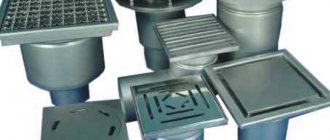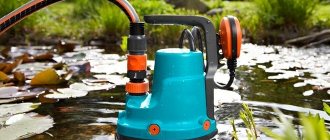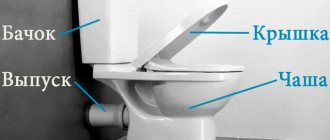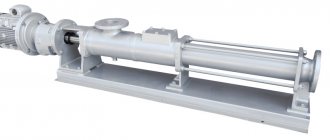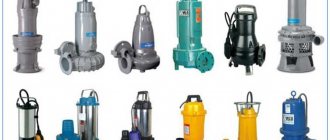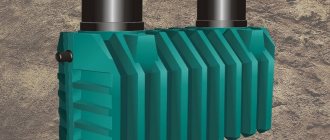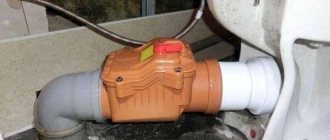Installing a sink siphon, which serves to drain wastewater into the sewer system, is a fairly simple task. To carry it out, it is not at all necessary to resort to the help of professional plumbers. All that is required is a minimum set of tools and knowledge about the operating principle and design of this device. It is much more difficult to choose a model that suits all parameters. Let's look at the pros and cons of different modifications and useful additions to them.
Structure
A siphon is a metal or plastic structure that includes a reservoir and several pipes. One connects to the sink drain, the other to the sewer. It is in them that water flows when we wash our faces or wash dishes. Initially, the liquid from the sink enters the siphon, and from it through a curved pipe into the common sewer riser. A metal mesh located at the base of the device, on the sink opening, acts as a fine-mesh filter, protecting the system from blockages.
The curvature of the siphon ensures that a certain volume of liquid is retained, forming a water seal that prevents sewer odors from entering the house.
The purchased siphon kit usually includes a body, inlet and outlet pipes, metal mesh, linings and other consumables. Experts recommend purchasing models equipped with an overflow, which helps avoid flooding.
The pipe under the sink, what is it called and the features of its design
To prevent the room from smelling like sewer and to prevent the pipes from becoming clogged with solid food debris, the drainage system must contain a small part - a siphon. This element consists of hermetically connected pipes that ensure the performance of the two important functions listed above. This channel is formed in such a way that a bend is formed approximately in the middle, which does not allow the water to completely go into the drain.
It is this “hydraulic plug” that prevents unpleasant odors from reaching the surface. Also, thanks to this “elbow”, insoluble particles cannot pass further into the sewer along with the liquid, because they simply remain right at the bottom of the siphon. This moment is also convenient because at any time you can easily unscrew the desired part and clean it of accumulated debris, and then return it to its place.
Today, stores offer a wide variety of models, slightly different from each other. However, there are several elements present in each of them:
Of course, these are not all the parts that may be needed to assemble a particular siphon. The complete list for your model, as well as the sequence of installation steps, will be indicated in the instructions for the device.
Pipe siphon
Pipe is a popular option for a ceramic bathroom sink. It is not worth installing it in the kitchen, since it is more difficult to clean than other devices. These models are compact in size and attractive in design. The water seal is formed due to the curvature of the pipe. The lower leg of the device is usually removable. It will have to be dismantled to clean it.
The disadvantages of such a siphon include the following points:
- A shallow water seal, due to which the liquid evaporates quite quickly, and if the sink is rarely used, an unpleasant odor may appear in the room.
- The rigid design requires careful sizing: the siphon outlet must be located so that it can be connected to the sewer; installation is only permissible on standard drainage pipes.
USEFUL INFORMATION: How to make forced ventilation in the bathroom
Choosing a kitchen siphon pipe for the kitchen
The very first thing you need to pay attention to when choosing a siphon is the features of the sink. A standard product makes it easy to purchase the desired design, but an exclusive model will require careful selection. In the best case, a siphon can be purchased immediately complete with a washbasin, but if this is not possible, you should pay attention to the following selection rules:
- a big role is played by the water pressure that will come from the tap and additional kitchen utensils (a washing machine and even a compact dishwasher under the sink);
- the more devices there are in the kitchen connected to the siphon, the more outlets and the size of the structure itself will be needed;
- Excessive drainage will lead to flooding, which means a flat siphon can be immediately discarded from the choice.
- the neck of sinks and washbasins has a different diameter, and granite sinks can have difficulties;
- calculating the distance between the neck and the entrance to the sewer hole (usually it is standard, but there are exceptions when installing a sink);
- presence of release (often included in the set, but there are exceptions);
- How level is the siphon from the sewer outlet? A shift to the side of more than 4 cm will require a corrugated structure or a bottle-type siphon;
- product integrity (no errors).
It is worth taking into account the diameter of the sewer inlet, which ranges from 35-50 cm. A siphon tube with a smaller diameter can be connected using an adapter, which cannot be done with a larger diameter.
Bottle
Bottle siphon is the most popular type. Its design evokes associations with a flask or bottle, hence the name. The exhaust pipe can be either rigid or flexible corrugated.
Advantages of bottle devices:
- The siphon design allows you to effortlessly dismantle its most clogged part.
- This model is easy to maintain.
- The bottle drain does not need to be replaced for a long period of time.
- There is always water in the water seal, so the apartment is reliably protected from sewer smell.
- If small things get into the drain, they can be easily removed by unscrewing the flask.
The bottle version has some disadvantages: it accumulates contaminants in the drain container (hair, threads, grease), and is also more prone to leakage than other varieties due to the larger number of connections.
Purpose and design
The device is divided into a pipe and a bent siphon, which helps protect the apartment from the unpleasant odor that spreads from the drain.
The design prevents the water drain pipe from clogging with solid particles coming from plumbing fixtures.
How does a siphon drain work?
During draining, the liquid flows into the siphon, passes along the bend, rises and enters the sewer.
In this case, part of the water remains in the lower part of the curved tube. It is a hydraulic seal that does not allow odors to pass through. The curved section of the siphon traps solid particles and small objects. To clean this area, the parts are removed and reinstalled after cleaning.
Corrugated
This device is easy to install and consists of an outlet and a curved corrugated pipe.
Advantages of using a siphon for a corrugated sink:
- Can be connected to sinks and sewer risers even if their location is non-standard.
- Easy to install and affordable.
- The bend for the water seal is formed by the installer himself.
- Due to the absence of connections, the possibility of leakage is virtually eliminated.
- Regardless of the distance separating the sink and the floor, high-quality drainage will be ensured.
Like bottle drains, corrugated drains have their drawbacks:
- due to the unevenness of the inner surface, deposits of debris and dirt quickly form on it;
- hot water negatively affects the strength of corrugated pipes.
Dimensions
There is not much space under the sink, so the size of the structure is limited. In most cases, this siphon size is sufficient. For the device to operate efficiently, its bandwidth must also be taken into account. We should not forget about the distance between the outlet pipe from the siphon and the inlet of the sewer system. As a rule, the maximum height of the structure does not exceed 250 mm.
Typical siphon sizes
Putting a siphon on a kitchen sink when the diameter of the drain and sewer pipe are the same size is not a problem. However, when there are differences in pipe diameters, it is necessary to think about their connection in advance. In this case, various cuffs and their connecting pipes are used. For example, a 50 mm internal double-socket tee will allow you to connect a 50*40 sink and a 50*25 washing machine with sealing collars.
Transition sleeves for sewerage
Flat siphon
A type of bottle device. The main difference is the compact size and flat flask. It is used in cases where there is simply no space for a standard product, for example when installing a sink above a washing machine.
Advantages of a flat siphon:
- Due to its compactness, it can be installed in the most difficult to reach places.
- Cleans up just as easily as a regular bottle model.
- Allows rational use of the space under the washbasin, for example for installing a household appliance or cabinet.
USEFUL INFORMATION: Bathroom design in a classic style: examples and photos
Additional functional elements
Siphons installed under the sink may have the following accessories:
- Drain-overflow. If the washbasin is equipped with a second top drain, a siphon equipped with an additional pipe (overflow) is installed under it. This will avoid accidental flooding.
- Bottom valve. A mechanism installed in the drain hole instead of a grate and acting as a plug.
- Additional side fitting for connecting household appliances (washing machine or dishwasher).
- Duplicate branch. It has a special siphon designed for sinks with two bowls. We select a drain for them with the required number of outlets. This is exactly the device shown in the photo below.
Possible materials of manufacture
Materials used to create siphons:
- Metal. The products are distinguished by their decorative appeal and increased strength, but over time they can be subject to corrosion and oxidation. They are usually made of brass, less often - of bronze, copper, stainless steel. The most common models are chrome plated. The main disadvantage is the difficulty in selecting the size, because shortening a metal pipe will not be easy.
Chrome-plated products are chosen for wall-hung and countertop sinks. Being visible, they not only do not spoil the design of the washbasin, but also complement it favorably.
- Plastic. Due to their affordable price and good performance, plastic products are in great demand and popularity. They are lightweight, simple in design, and resistant to household chemicals. In the connecting nodes, the plastic siphon is equipped with rubber seals, which increases the service life of the product and its tightness. The product range of many manufacturers includes models with a special antibacterial coating of the internal cavity, which prevents the settling of grease and dirt and reduces the rate of clogging.

